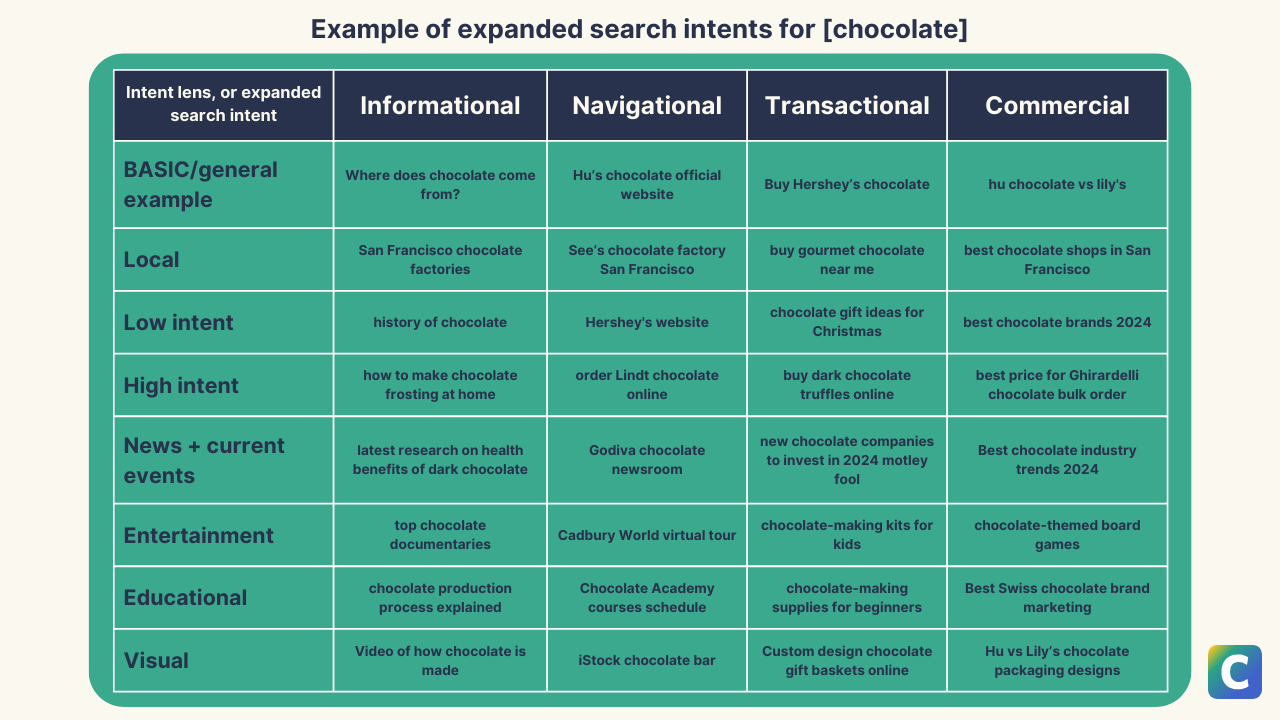Pulse of Information
Stay updated with the latest news and insights.
Decoding the Curiosity Behind Search Intent
Uncover the secrets of search intent and boost your traffic! Dive into the mind of users and transform curiosity into clicks.
Understanding the Different Types of Search Intent: A Comprehensive Guide
When creating content for your website, understanding the different types of search intent is crucial for optimizing your SEO strategy. There are primarily four categories of search intent: informational, navigational, transactional, and commercial investigation. Informational intent refers to users looking for specific information or answers to their questions, such as 'What is SEO?' or 'How to bake a cake?'. On the other hand, navigational intent pertains to users who are searching for a particular website or page, aiming to navigate directly to it, like typing 'Facebook login' into the search bar.
In addition to these, transactional intent involves users who are ready to make a purchase or complete a transaction, exemplified by queries such as 'buy running shoes online' or 'download music'. Lastly, commercial investigation is when users are researching products or services before making a decision, often seen in queries like 'best laptops 2023' or 'top-rated cameras for photography'. Understanding these types of search intent helps businesses align their content with what users are truly searching for, enhancing both engagement and conversion rates.

How to Align Your Content Strategy with User Search Intent
Aligning your content strategy with user search intent is crucial for improving your SEO performance and ensuring that your audience finds the information they are seeking. Start by conducting thorough keyword research to identify the specific phrases that users are typing into search engines. Once you have gathered a list of relevant keywords, categorize them based on the different types of search intent: informational, navigational, transactional, and commercial investigation. This categorization will serve as the foundation for your content strategy, allowing you to create targeted content that meets the needs of your audience.
Next, it's important to tailor your content format and structure to match user expectations. For instance, if you discover that a significant number of users are seeking informational content, consider creating comprehensive guides, how-to articles, or infographics. In contrast, if the search intent leans towards transactional, prioritize product reviews or comparison charts. Additionally, utilizing header tags and bullet points can help enhance readability and improve user engagement. By aligning your content with user search intent, you not only boost your SEO rankings but also foster a more satisfying experience for your readers.
What Drives Search Intent and How Can You Leverage It for SEO?
Understanding what drives search intent is essential for crafting effective SEO strategies. Search intent is the underlying purpose behind a user's query, often categorized into four main types: informational, navigational, transactional, and commercial investigation. For example, when a user searches for 'how to bake bread', their intent is informational, seeking knowledge or instructions. Conversely, a search for 'buy bread online' indicates transactional intent, as the user is looking to make a purchase. By identifying the dominant search intent behind targeted keywords, you can align your content more closely with user expectations and enhance engagement.
Leveraging search intent for SEO involves tailoring your content to meet the specific needs of your audience. This can be achieved by employing various tactics:
- Conduct thorough keyword research to uncover the search phrases your target audience uses.
- Create content that matches the intent type, such as detailed guides for informational searches or product comparisons for commercial investigation.
- Optimize on-page elements, including headlines, meta descriptions, and image alt texts, to reflect keywords that resonate with user intent.
By aligning your content strategy with search intent, you not only improve your chances of ranking higher in search engine results but also foster a better user experience, leading to higher conversion rates.